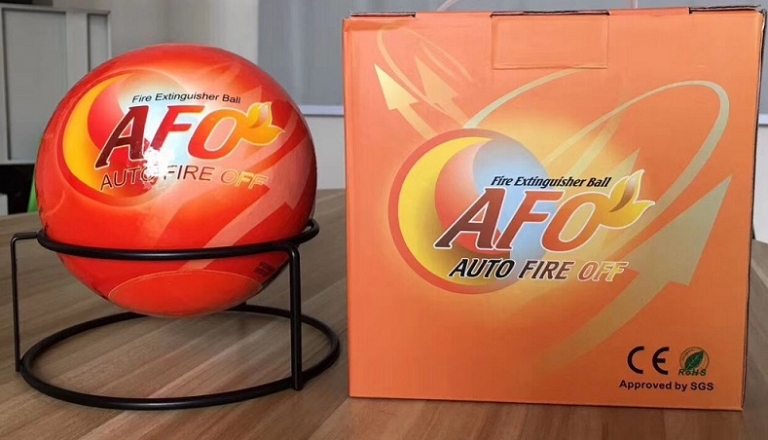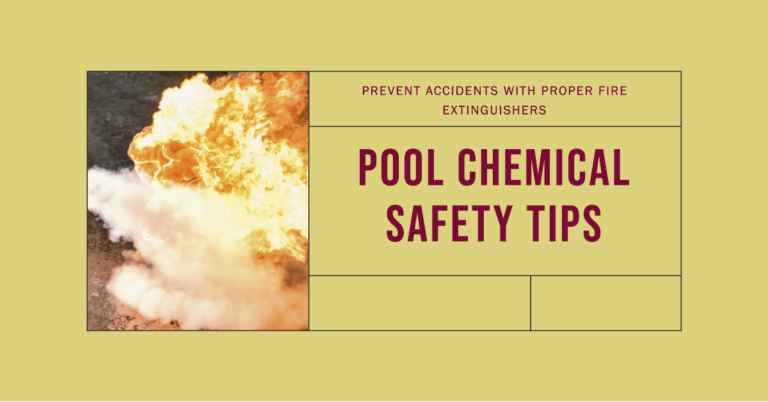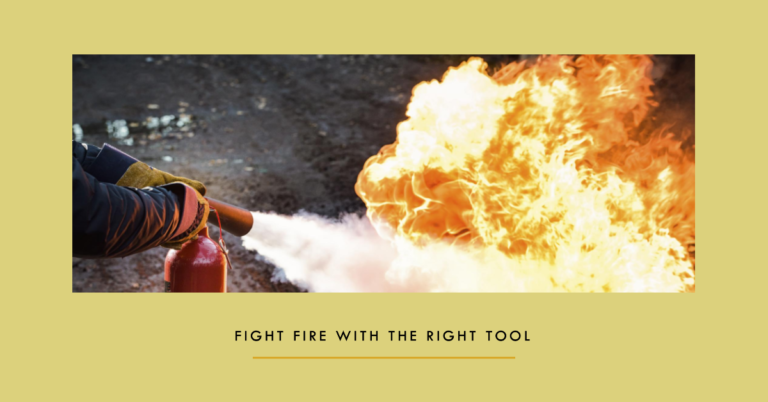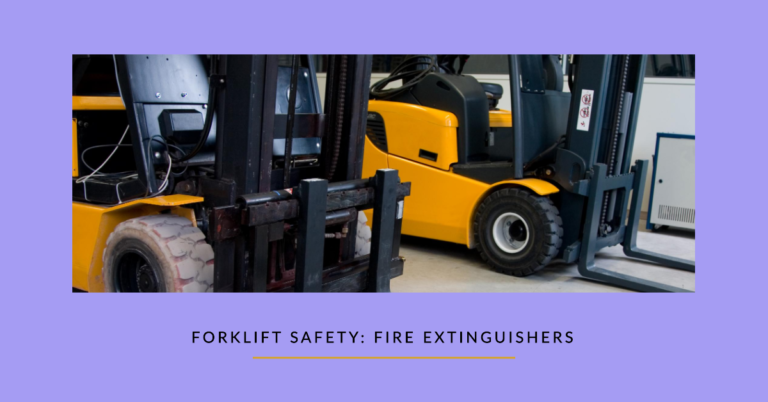Last Updated on October 9, 2023 by Allen
In the realm of fire safety, the choice between a traditional fire extinguisher and a modern fire spray can be pivotal. Both of these firefighting tools serve the critical purpose of combating fires, but they do so with distinctive approaches and applications. This comprehensive comparison aims to shed light on the uses, advantages, limitations, and safety precautions associated with fire extinguishers and fire sprays. By the end of this article, you’ll gain valuable insights to make an informed decision on which fire suppression solution suits your specific needs, whether it’s in your home, workplace, or vehicle. Understanding the differences between these fire-fighting options is essential for ensuring effective fire control and enhanced safety.

Fire Extinguisher vs. Fire Spray
When it comes to fire safety, having the right tools on hand can make all the difference. Two popular options for fire suppression in homes and workplaces are traditional fire extinguishers and the more modern fire sprays. Both serve the crucial purpose of tackling fires, but they have distinct characteristics and applications. In this comprehensive comparison, we’ll explore the uses, benefits, limitations, and precautions associated with fire extinguishers and fire sprays. By the end of this article, you’ll be better equipped to make an informed choice about which fire suppression tool suits your specific needs and circumstances.
What is a Fire Extinguisher
A fire extinguisher is a portable firefighting device designed to suppress and extinguish small fires during their early stages. It consists of a cylindrical container filled with a fire-extinguishing agent under pressure. When activated, the extinguisher releases the agent through a nozzle or hose, allowing the user to direct it at the base of the flames.
Fire extinguishers are classified based on the type of fire they are effective against, with common classifications including Class A (ordinary combustibles like wood and paper), Class B (flammable liquids), and Class C (electrical fires). They are a critical safety tool, providing immediate fire control and helping to prevent minor fires from escalating into major emergencies. Fire extinguishers are typically found in homes, offices, industrial settings, and vehicles to enhance fire safety.
Types of Fire Extinguishers
- ABC Fire Extinguisher: An ABC fire extinguisher is a versatile choice for home and office use. It can effectively combat fires involving wood, paper, flammable liquids, and electrical equipment (Class A, B, and C fires).
- CO2 Fire Extinguisher: CO2 extinguishers are crucial for addressing electrical fires (Class C) and flammable liquid fires (Class B). They leave no residue, making them suitable for sensitive equipment.
- Water-Fire Extinguisher: Water extinguishers are ideal for Class A fires, such as those fueled by wood and paper. They cool the flames and eliminate heat to extinguish the fire.
- Halon Fire Extinguisher: Halon extinguishers, though no longer manufactured, were effective against a wide range of fires, including Class A, B, and C. They were phased out due to environmental concerns.
- K-Class Fire Extinguisher: K-class extinguishers are specifically designed for kitchen fires involving cooking oils and fats. They prevent grease fires from escalating.
Uses and Effectiveness
- Versatility: Fire extinguishers are versatile tools, suitable for various fire classes, offering comprehensive fire protection in homes, offices, and industrial settings.
- Immediate Response: They provide rapid fire control, helping prevent minor incidents from turning into major emergencies by suppressing flames quickly.
- Specific Fire Classes: Different extinguisher types are optimized for specific fire classes, ensuring maximum suppression effectiveness and minimal damage.
- Life and Property Protection: Fire extinguishers help safeguard lives and minimize property damage during fire emergencies.
- Legal Compliance: Many safety regulations and building codes require the presence of fire extinguishers in specific settings to ensure compliance and enhance safety.
Benefits
- Quick Response: Fire extinguishers allow for immediate fire control, crucial for halting fire progression.
- Property Preservation: They minimize property damage by suppressing flames early in a fire, reducing the extent of destruction.
- Life Safety: Effective use of extinguishers can save lives by preventing the spread of fire and the potential for injury.
- Varied Options: Different extinguisher types cater to diverse fire hazards, ensuring the right tool for the job.
- Legal Adherence: Compliance with safety regulations is ensured by having the appropriate fire extinguisher in place, avoiding legal issues.
Limitations
- Size and Weight: Some extinguishers can be bulky and heavy, limiting their mobility and ease of use in confined spaces.
- Training Requirement: Proper training is essential for safe and effective usage. Inexperienced users may struggle to operate extinguishers effectively.
- Maintenance: Regular inspections and maintenance are necessary to ensure functionality. Neglecting maintenance can lead to equipment failure during an emergency.
Precautions
- Safety Distance: Users should maintain a safe distance from the fire and use the P.A.S.S. (Pull, Aim, Squeeze, Sweep) technique for effective firefighting.
- Avoid Smoke Inhalation: It’s important to position oneself upwind of the fire to minimize smoke inhalation risks.
- Escape Route: Always have an escape route planned in case the fire escalates beyond control, ensuring personal safety.
What is Fire Spray
A fire spray is a portable fire suppression device that comes in various forms, including aerosol and foam-based sprays. It is designed for quick and user-friendly deployment to suppress fires during their early stages. Fire sprays are known for their simplicity, often featuring a straightforward activation mechanism such as a push button or pull tab. They are particularly effective against specific fire types, with foam-based sprays suitable for Class A (wood and paper) and Class B (flammable liquid) fires, while kitchen fire sprays excel at suppressing grease fires (Class K).
Types of Fire Sprays
- Aerosol Fire Spray: Aerosol fire sprays are compact and user-friendly. They are suitable for various fire classes, including Class A, B, and C, offering versatility in firefighting.
- Foam Fire Spray: Foam-based fire sprays create a thick, smothering foam to suppress fires effectively. They are ideal for Class A and B fires.
- Kitchen Fire Spray: Specifically formulated for kitchen fires, these sprays excel at suppressing grease fires (Class K) quickly and safely.
Uses and Effectiveness
- Ease of Use: Fire sprays are designed for easy and intuitive use, making them accessible to individuals with minimal training or experience.
- Kitchen Safety: Kitchen fire sprays are particularly effective in suppressing grease fires, a common kitchen hazard. They rapidly smother burning oils, preventing dangerous flare-ups.
- No Residue: Fire sprays leave no chemical residue, simplifying post-fire cleanup and reducing damage to equipment and appliances.
- Compact and Portable: Portable fire sprays are lightweight and easy to carry, making them suitable for home use and on-the-go fire protection.
- Immediate Deployment: Aerosol fire sprays can be quickly activated with a push of a button, providing immediate fire control when every second counts.
Benefits
- Simplicity: Fire sprays are straightforward to use and require minimal training or instruction. This ensures that anyone can effectively use them during a fire emergency.
- Kitchen Protection: Kitchen fire sprays are essential for safely tackling cooking oil and grease fires, which can be challenging to extinguish with traditional methods.
- No Cleanup: Fire sprays leave no residue or harmful chemicals behind, reducing the post-fire cleanup effort and minimizing damage to property.
- Portability: Portable fire sprays can be easily stored in vehicles or placed in strategic locations for quick access during fire emergencies.
- Environmentally Friendly: Many fire sprays are eco-friendly, free of harmful chemicals like halon or CFCs, and do not contribute to ozone depletion.
Limitations
- Size Limitation: Fire sprays are typically available in smaller sizes compared to traditional fire extinguishers. This limits their ability to tackle larger fires or provide extended firefighting durations.
- Single Use: Most fire sprays are designed for single use and need replacement after activation, resulting in ongoing costs.
- Limited Fire Types: Fire sprays may not be effective against all fire classes, particularly electrical fires (Class C). It’s essential to verify the compatibility of the spray with the fire type.
Precautions
- Proper Aim: Ensure accurate aiming when using a fire spray to cover the fire effectively. Direct the spray at the base of the flames.
- Maintain Distance: Keep a safe distance from the fire to avoid personal injury. Stand back and approach cautiously after using the spray.
- Ventilation: After using a fire spray, ensure proper ventilation to disperse fumes and smoke from the area, maintaining clear air for breathing.
Frequently Asked Questions
Can a fire spray replace a traditional fire extinguisher?
While fire sprays are effective for specific fire types, they may not fully replace traditional fire extinguishers, which offer versatility against multiple fire classes. It’s advisable to have both tools available for comprehensive fire safety.
Are fire sprays suitable for electrical fires?
Most fire sprays are not recommended for electrical fires (Class C). Using them on electrical equipment may pose safety risks. A Class C fire extinguisher is typically more appropriate for such situations.
Are fire sprays safe for sensitive electronic equipment?
Some fire sprays are designed to be safe for use around sensitive electronic equipment. However, it’s essential to check the product specifications for compatibility.
Do fire sprays have an expiration date?
Yes, most fire sprays have an expiration date. It’s crucial to check the manufacturer’s label for information on the product’s shelf life and replacement recommendations.
Can I use fire spray in confined spaces?
Fire sprays are generally safe for use in confined spaces, provided there is adequate ventilation to disperse fumes and smoke.
Conclusion
In the battle against fires, the choice between a fire extinguisher and a fire spray boils down to your specific needs and circumstances. Fire extinguishers offer versatility and can handle various fire classes, making them a comprehensive firefighting tool. On the other hand, fire sprays are simple and easy to use, making them suitable for quick response, especially in kitchens and vehicles. Ultimately, the ideal choice may involve having both options readily available, ensuring you are well-prepared to tackle a range of fire emergencies. Whichever tool you select, remember that proper training, regular maintenance, and adherence to safety guidelines are essential for effective fire control and enhanced safety. By making an informed decision, you can take a significant step toward safeguarding lives and property in the face of unexpected fires.






